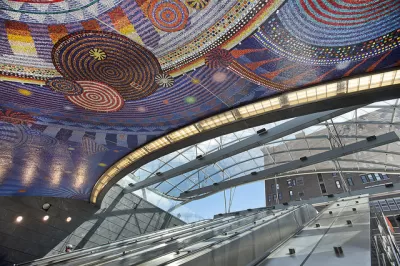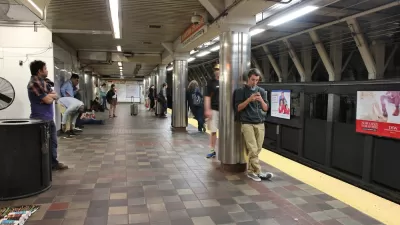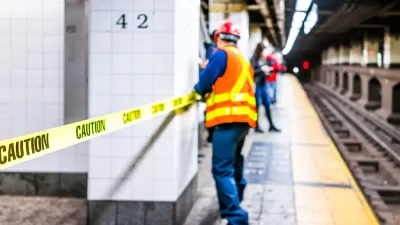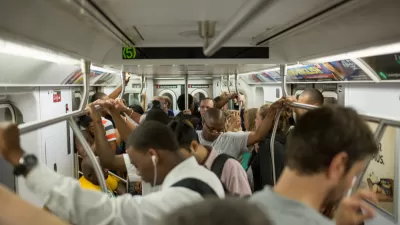It's important for transit to look and feel nice, if only to resurrect its deeply tarnished image in the United States. But ridership depends on good service, not good aesthetics.

For transit riders, beautiful stations and convenient amenities are very welcome. But Yonah Freemark makes an important point about bloated costs. "Anyone who has ever ridden the [New York] Subway knows first hand that its success has nothing to do with aesthetics or access to luxury amenities. Stations are hardly in good shape, trains are packed, and cell service is spotty at best. People ride the Subway in spite of these things; they ride it because it's fast, it's frequent, and it's (relatively) reliable."
When decision-makers favor sleek 21st-century monumentalism, costs soar and service doesn't necessarily improve. "New York's own $4 billion World Trade Center Transportation Hub—perhaps the world's single-most expensive station—is evidence of that; rather than improve service frequency or speed, officials chose to direct public funds to a white monument that does nothing to actually ease the lives of daily commuters."
Freemark cites a recent proposal by Boston's MBTA to cut expenses for its Green Line extension. Simple measures to reduce station sizes and cut out excess canopies and escalators save an impressive $300 million. Other tactics could increase that figure substantially.
Regardless, says Freemark, American transit agencies have been unable to reduce build costs to international standards. Until we can do that, perhaps we should focus on what commuters really care about.
FULL STORY: Frequent service, not escalator access, is what attracts transit users

Alabama: Trump Terminates Settlements for Black Communities Harmed By Raw Sewage
Trump deemed the landmark civil rights agreement “illegal DEI and environmental justice policy.”

Study: Maui’s Plan to Convert Vacation Rentals to Long-Term Housing Could Cause Nearly $1 Billion Economic Loss
The plan would reduce visitor accommodation by 25% resulting in 1,900 jobs lost.

Planetizen Federal Action Tracker
A weekly monitor of how Trump’s orders and actions are impacting planners and planning in America.

Federal Homelessness Agency Places Entire Staff on Leave
The U.S. Interagency Council on Homelessness is the only federal agency dedicated to preventing and ending homelessness.

Restoring Northern India’s Himalayan ‘Water Temples’
Thousands of centuries-old buildings protect the region’s natural springs and serve as community wells and gathering places.

Milwaukee to Double Bike Share Stations
Bublr Bikes, one of the nation’s most successful, will add 500 new e-bikes to its system.
Urban Design for Planners 1: Software Tools
This six-course series explores essential urban design concepts using open source software and equips planners with the tools they need to participate fully in the urban design process.
Planning for Universal Design
Learn the tools for implementing Universal Design in planning regulations.
Caltrans
Smith Gee Studio
Institute for Housing and Urban Development Studies (IHS)
City of Grandview
Harvard GSD Executive Education
Toledo-Lucas County Plan Commissions
Salt Lake City
NYU Wagner Graduate School of Public Service





























